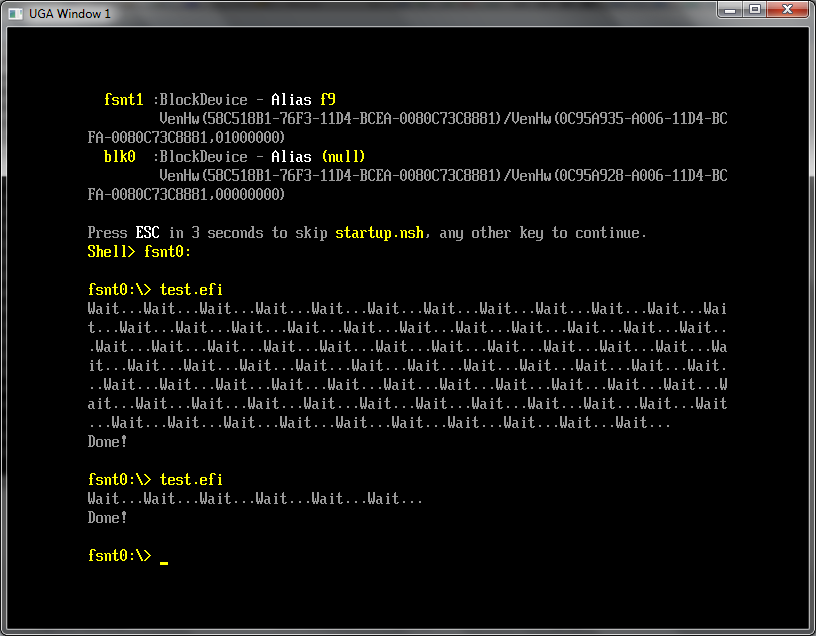

- #Disable efi shell how to#
- #Disable efi shell install#
- #Disable efi shell trial#
- #Disable efi shell zip#
- #Disable efi shell download#
This means that I have to edit files by mounting the EFI in MacOS. So I can't do anything with the edit command (which is a text editor).
#Disable efi shell install#
#Disable efi shell how to#
However this document gave me vital clues as to how to do anything with the shell. The commands look the same but some of the syntax is different (and crucially the mm command is different).
#Disable efi shell download#

#Disable efi shell zip#
If you use the suggested rEFInd download then there's a handy script in the zip which you can execute with sudo /mountesp to mount to the EFI area so that you can copy the shell binary and create/edit the script that is coming up later on. I believe that rEFInd expects the exact filename shell.efi no matter which shell you use. Note that to install this, you have to copy the Shell_Full.efi file in the download page to your EFI/tools directory, however you must rename it to shell.efi (lowercase).Bottom row: MacOS recovery mode, EFI Shell, power off, restart, exit rEFInd. From left to right, top row: Win 10, Win 10 + eGPU (using variant of nando4's solution), MacOS Sierra 10.12.3. Attached is a screen of my boot loader screen. In any case the rEFInd setup may well be of use to some people in a similar boat to me. Caveat: I am on the road right now and don't have my eGPU with me, so I can't tell if the solution actually works.
#Disable efi shell trial#
Checked with MS and they say thats normal as they are now effectively treated as removable drives like a USB stick.After a few days of intensive research, trial and error, I've managed to get rEFInd working with with a variation of the script posted by nando4. Note the negative bit of this is, when you do connect the Sata data cables later, you get the hard drive letters duplicated in Win 10. If its disabled in the Bios how come it loaded some parts of Windows on these technically disabled drives ? I didnt bother undo the Sata Power cables. Strangely disabling the other drives in the Bios was not good enough, the drives had to be phyically disconnected? I had to pull the sata cables, then reload Windows, then it was fine. ( discovered this by removing the Samsung and the workstation would not boot ) If not although mine loaded Windows on the Intel PCIe SSD it must have also loaded some part of Win 10 on the Samsung EVO. Other weird non-documented thing I found, was to pull off the SATA data cable on all other drives. If you don't, mine won't load Windows on the Intel 750 as a bootable UEFI disc. ) to get into the Bios and change the boot to UEFI USB, AND then go to The PCIe tsb and set that to UEFI and EFI. Just remember if you have something like the Intel 750 PCIe SSD, and want to boot from it ( and you will when you see it load windows in 7 secs.


 0 kommentar(er)
0 kommentar(er)
